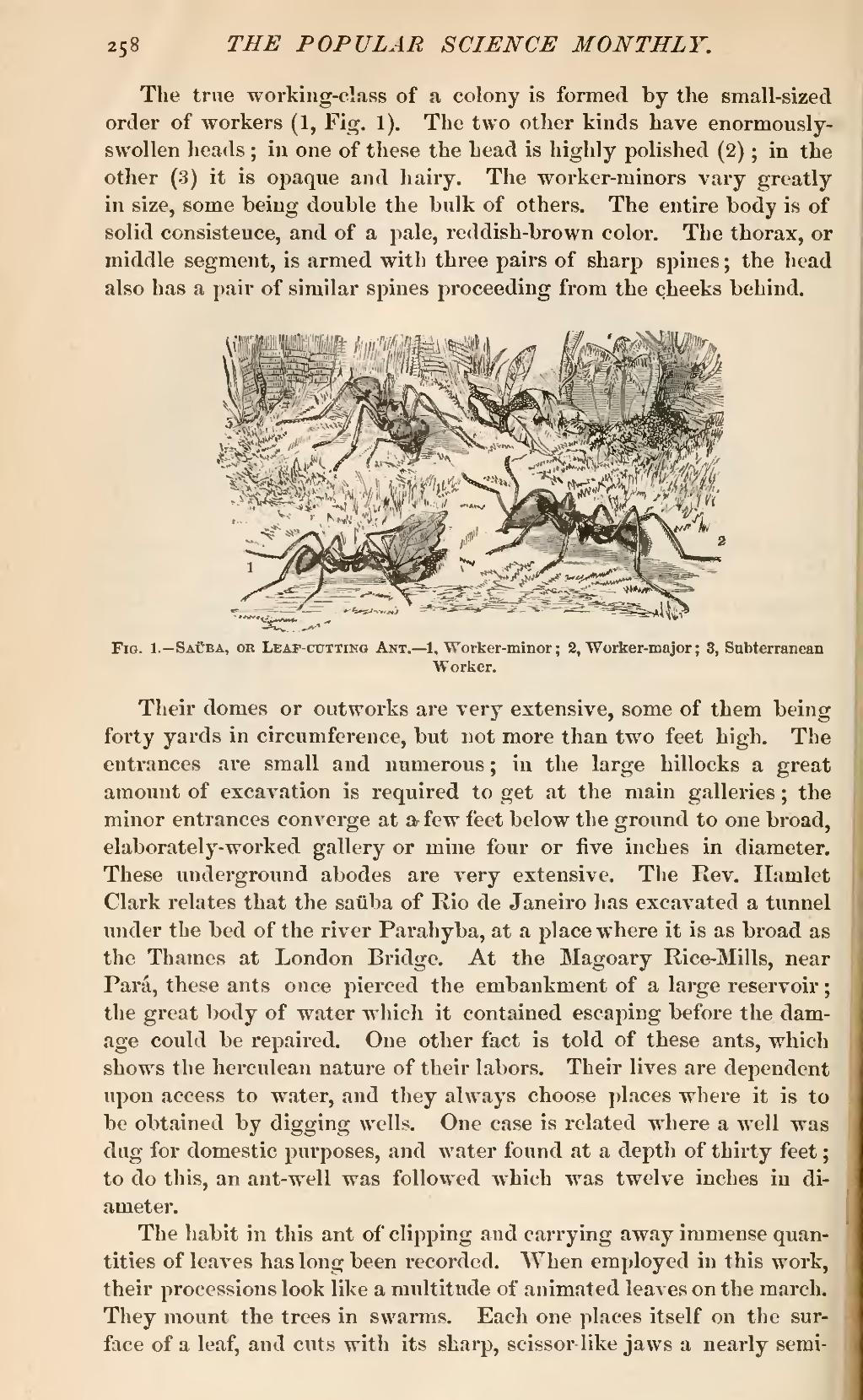The true working-class of a colony is formed by the small-sized order of workers (1, Fig. 1). The two other kinds have enormously-swollen heads; in one of these the head is highly polished (2); in the other (3) it is opaque and hairy. The worker-minors vary greatly in size, some being double the bulk of others. The entire body is of solid consistence, and of a pale, reddish-brown color. The thorax, or middle segment, is armed with three pairs of sharp spines; the head also has a pair of similar spines proceeding from the cheeks behind.

Fig. 1.—Saüba, or Leaf-cutting Ant.—1, Worker-minor; 2, Worker-major; 3, Subterranean Worker.
Their domes or outworks are very extensive, some of them being forty yards in circumference, but not more than two feet high. The entrances are small and numerous; in the large hillocks a great amount of excavation is required to get at the main galleries; the minor entrances converge at a few feet below the ground to one broad, elaborately-worked gallery or mine four or five inches in diameter. These underground abodes are very extensive. The Rev. Hamlet Clark relates that the saüba of Rio de Janeiro has excavated a tunnel under the bed of the river Parahyba, at a place where it is as broad as the Thames at London Bridge. At the Magoary Rice-Mills, near Pará, these ants once pierced the embankment of a large reservoir; the great body of water which it contained escaping before the damage could be repaired. One other fact is told of these ants, which shows the herculean nature of their labors. Their lives are dependent upon access to water, and they always choose places where it is to be obtained by digging wells. One case is related where a well was dug for domestic purposes, and water found at a depth of thirty feet; to do this, an ant-well was followed which was twelve inches in diameter.
The habit in this ant of clipping and carrying away immense quantities of leaves has long been recorded. When employed in this work, their processions look like a multitude of animated leaves on the march. They mount the trees in swarms. Each one places itself on the surface of a leaf, and cuts with its sharp, scissor-like jaws a nearly semi--
